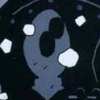-
Welcome to the eG Forums, a service of the eGullet Society for Culinary Arts & Letters. The Society is a 501(c)3 not-for-profit organization dedicated to the advancement of the culinary arts. These advertising-free forums are provided free of charge through donations from Society members. Anyone may read the forums, but to post you must create a free account.
What is most important in a cookbook?
-
Similar Content
-
- 0 replies
- 405 views
-
- 21 replies
- 3,727 views
-
- 81 replies
- 45,991 views
-
- 2 replies
- 1,729 views
-
- 2,656 replies
- 506,068 views
-
-
Recently Browsing 0 members
- No registered users viewing this page.




Recommended Posts